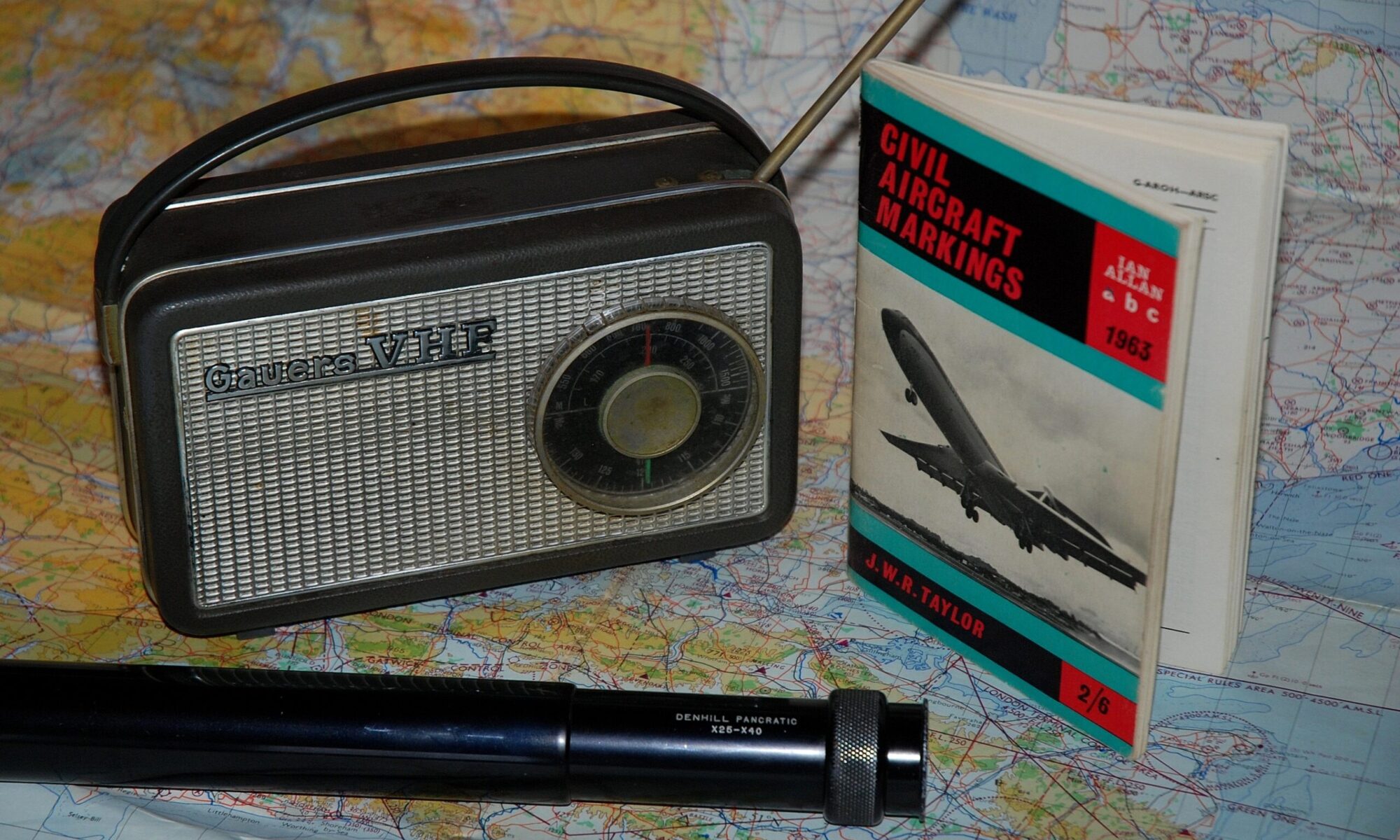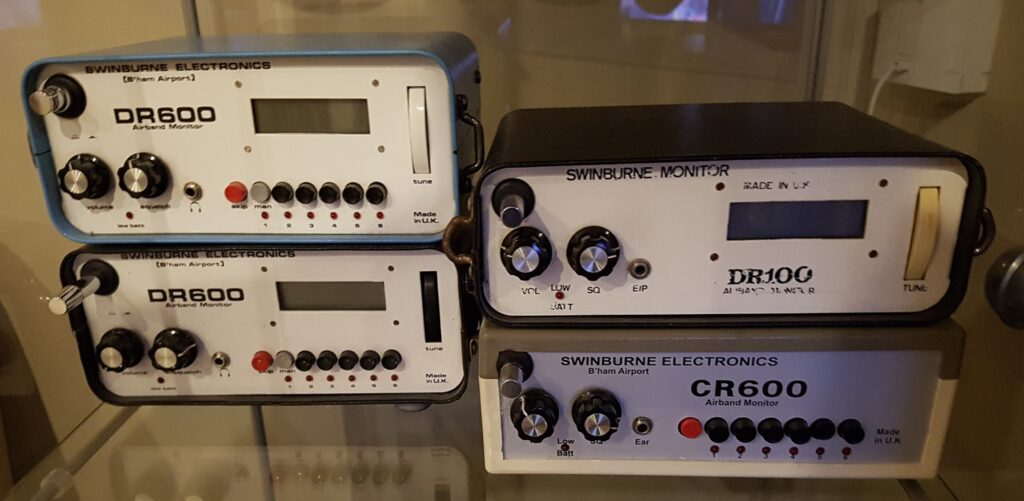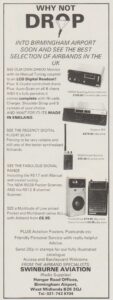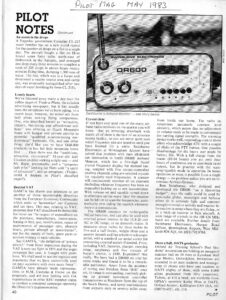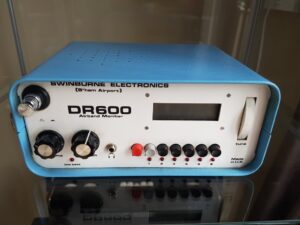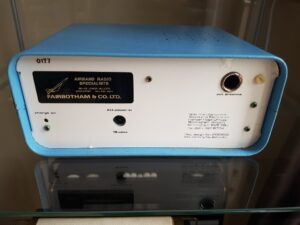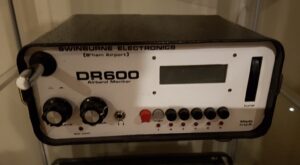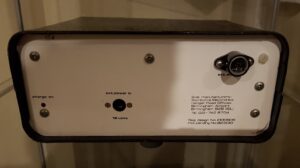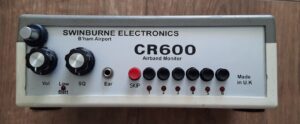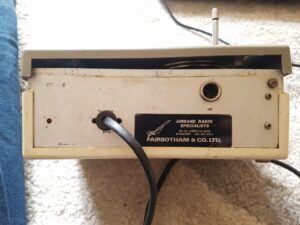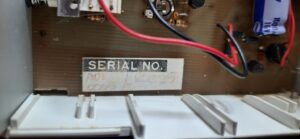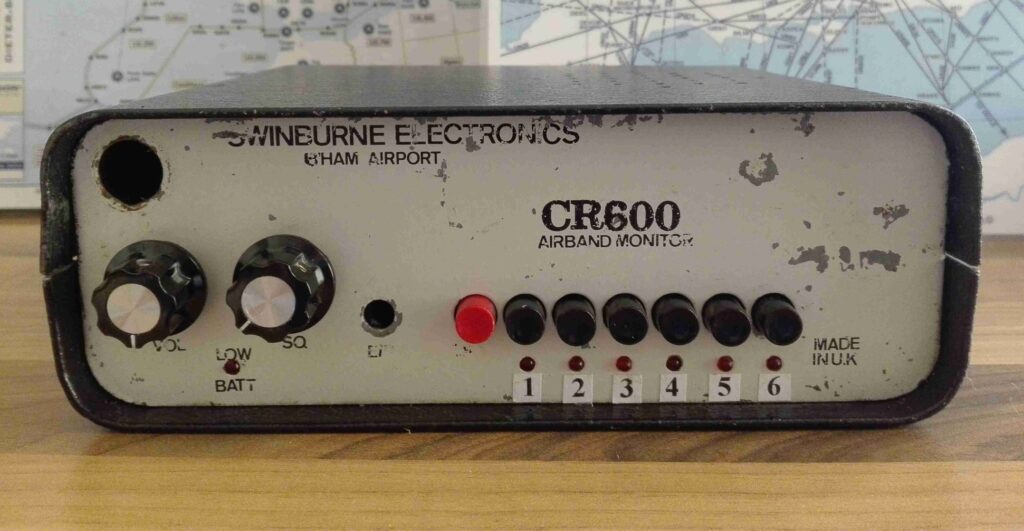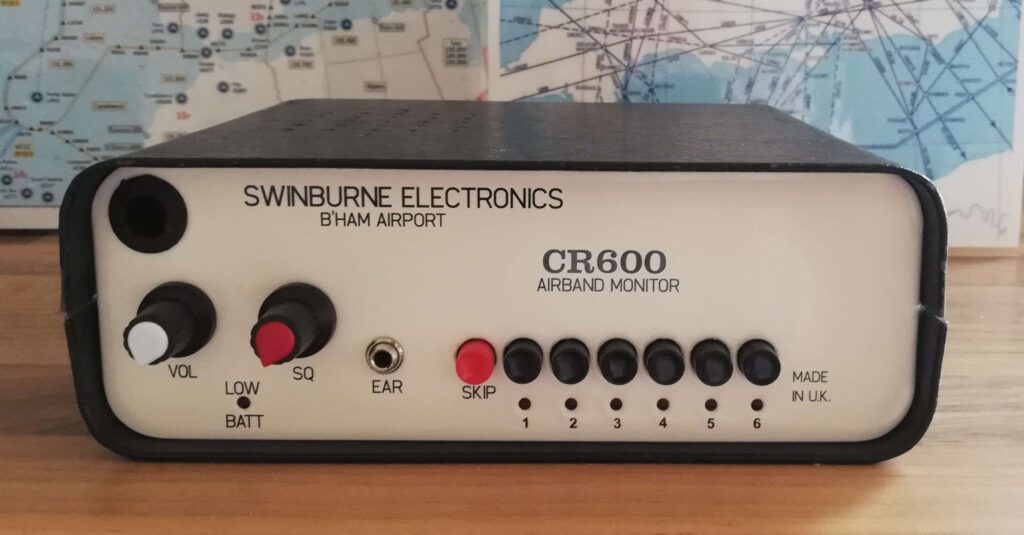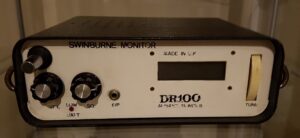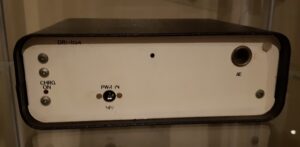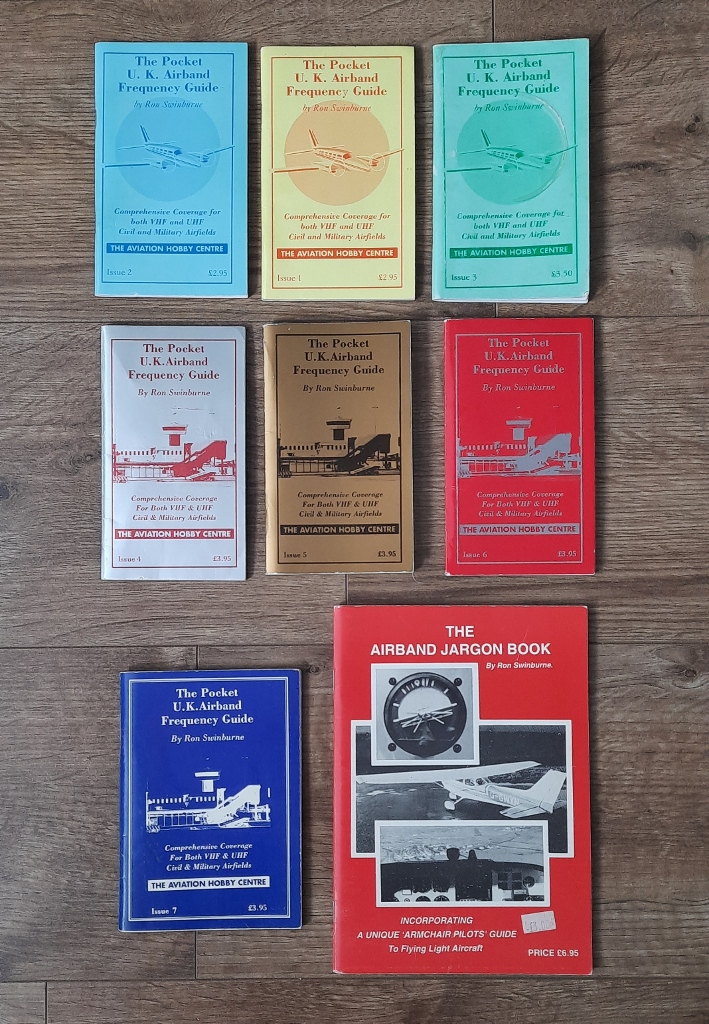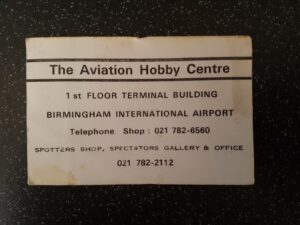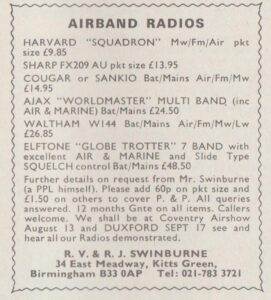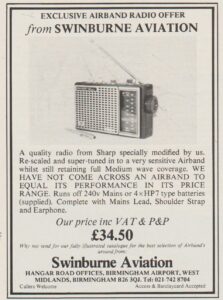Although not from the 1960’s I wanted to include Swinburne Electronics as they were the creation of Ron Swinburne, who owned The Aviation Hobby Shop at Birmingham Airport. As a child I visited this shop many times with my father!
On the 14th June 2019 I had the privilege to meet Ron Swinburne (M0WSN), who gave me a fascinating insight into the company and the radio’s produced.
Ron initially started with a TV and Radio repair shop in Birmingham, before starting up an aviation shop in the Elmdon terminal at Birmingham Airport. The shop later moved to the new terminal over the other side of the airport.
In the 1970’s Ron got his private pilot’s licence, but suffered a complete radio failure in a light aircraft during training. This was instrumental in the desire to design and build a decent fully portable Airband Monitor that would serve as a backup receiver whilst airborne.
It was Ron’s brother David who designed the airband radio’s, which were sold in the shop in the early 1980’s. Ron would also travel to events such as airshows and sell the Swinburne radio’s to aircraft enthusiasts. This was very much a family business and even the family got involved in assembling the radios.
The name of the person who assembled the radio is written on a sticker inside the radio. Jean is Ron’s niece. ADE is Adrian, Ron’s son-in-law married to his younger daughter (sadly no longer with us). MAV is Paul (Maverick) who is married to Ron’s elder daughter.
The DR600 was the very first radio to be sold by Ron and his family. DR standing for Digital Radio (Or David & Ron!). This was way ahead of it’s time as it included a digital display, room for 6 crystals and a dial so you could tune across the VHF airband. These were being sold for around £150. The first batch had a blue case, but shortly afterwards the company that produced these folded and another supplier was needed. These later models had a black case.
The DR600 was followed by a CR600. CR standing for Crystal Radio. This was similar to the DR600 but without the digital display. These were being sold for around £100.
The last model that Swinburne produced was a DR100 which was a cheaper model but kept the digital display similar to that used in the DR600.
Overall Ron believes Swinburne sold around 1500 radios, although many more would have been supplied if some large commercial orders had have come to fruition. Unfortunately this wasn’t to be so they were sold primarily to aviation enthusiasts.
My thanks to Ron for taking the time to meet me and providing all the information above.
DR600
DR600 Blue
DR600 Black
This webpage by John Mills provides technical information on the DR600 www.milair.co.uk/airband.html
Samatron U-Verter
Noted in the DR600 Features booklet is a Samatron U-Verter, which allows you to listen to UHF on a DR600. Does anyone have a picture of the Samatron or any further details on it?
CR600
The CR600 was produced after the DR600. Based on the same design but without a digital display. The first versions have a plastic casing, which was later replaced by a metal case.
My thanks to Dave at Cotswold Screen Printers Ltd (www.cotswoldscreenprinters.co.uk) for cleaning up my CR600 front panel and reprinting the text. It looks brilliant!
The only other CR600 I’m aware of is owned by Adam. This particular model has a rounded front and rear panel, with a metal black case. Serial number CR086 and assembled by Jean (148). This has also been re-done by Dave at Cotswold Screen Printers Ltd (www.cotswoldscreenprinters.co.uk)
DR100
‘Following on the success of the extremely popular DR600 and CR600, Customers asked us if we had a radio that did not rely on crystals but had the same performance and range and portability of the DR600 and its good looks. So we looked into the idea and came up with the DR100’
Books
Ron was also the author of ‘The Pocket U.K. Airband Frequency Guide’ and ‘The Airband Jargon Book’
Here’s one of Ron’s original business cards and possibly one of the first adverts for Swinburne
Other radios
